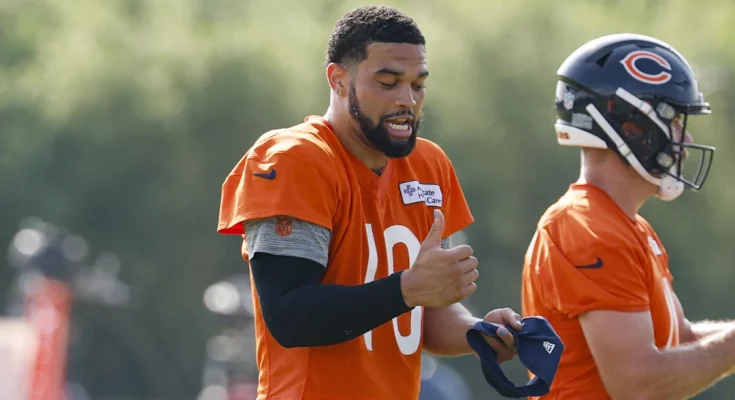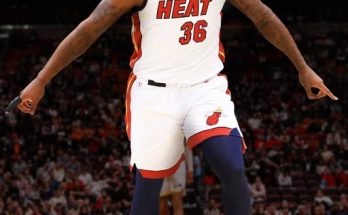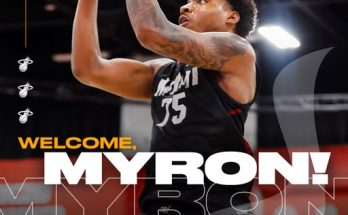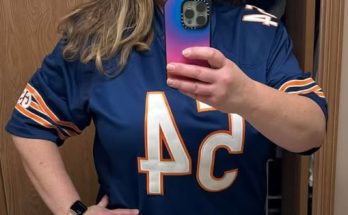When Ben Johnson accepted the head coaching job with the Chicago Bears, many in the NFL community immediately speculated how the offensive mastermind would shape his new team. Known for orchestrating one of the league’s most dynamic offenses in Detroit, Johnson arrived in Chicago with expectations and intrigue swirling. But one thing quickly became clear to insiders and league observers alike: Johnson has zeroed in on rookie quarterback Caleb Williams as the centerpiece of his vision for the franchise. And based on the way the team is being shaped, it’s becoming increasingly obvious that Johnson is purposefully building his offensive scheme, coaching staff, and locker room culture around the unique skill set and potential of Williams. This isn’t just a head coach adjusting to a rookie quarterback—this is a coach going all-in to craft the perfect environment for his chosen signal-caller.
Johnson’s arrival couldn’t have been timed more perfectly for the Bears. After trading away Justin Fields and resetting the quarterback room, Chicago used the No. 1 overall pick in the 2025 NFL Draft to select Williams—a Heisman-winning quarterback out of USC widely regarded as a generational talent. The Bears had spent decades chasing stability at quarterback, a pursuit littered with false starts and unmet potential. With Williams in the fold, and with Johnson now steering the ship, there’s a sense inside Halas Hall that the Bears finally have the tandem to break through decades of mediocrity.
But Johnson didn’t just inherit Williams—he sought him out. Multiple league sources have suggested that Johnson’s decision to take the Chicago job hinged in large part on the presence of the No. 1 pick and the ability to pair with Williams from day one. Johnson had turned down multiple head coaching opportunities the year before, citing a desire to wait for the perfect situation. When the Bears secured the top pick and began signaling a new era, Johnson’s name surged to the top of their list—and his enthusiasm about coaching Williams made the match feel destined. Behind closed doors, Johnson reportedly expressed to Bears leadership that Williams had the rare combination of intelligence, poise, and creativity that reminded him of top-tier quarterbacks he’d studied for years. He didn’t just want to coach Caleb—he wanted to build something with him.
From the outset of offseason workouts, the synergy between Johnson and Williams has been a storyline worth watching. Johnson, known for his adaptable play-calling and creative use of space, has taken an unusually hands-on approach with his rookie quarterback. He’s been in every quarterback meeting, has designed portions of the playbook specifically around Caleb’s strengths, and has even scrapped certain concepts from his Lions days that don’t mesh with Williams’ style. This isn’t about forcing a square peg into a round hole. It’s about unlocking Williams’ potential by any means necessary.
At the root of Johnson’s philosophy is a belief that great coaching starts with meeting players where they are and lifting them up with tailored support. With Williams, that’s meant allowing the rookie to have a voice in the offensive design process. Johnson and quarterbacks coach Kerry Joseph have reportedly involved Williams in whiteboard sessions, film breakdowns, and even weekly strategy brainstorms in which the rookie is encouraged to offer thoughts on route progressions, tempo control, and red-zone efficiency. The coaching staff sees Williams as a collaborator, not just a pupil. For a rookie, that level of responsibility is rare. For a quarterback of Caleb’s caliber, Johnson sees it as necessary.
It’s not just about what’s happening in the meeting rooms either. Johnson has made sure to reshape the offensive roster to complement Williams’ unique skill set. The Bears added explosive weapons this offseason, including veteran receiver Keenan Allen and top pick Rome Odunze, giving Williams reliable targets with varied styles. Allen offers a precision route-runner who can provide immediate comfort reads for a young quarterback, while Odunze brings the vertical dimension that Caleb exploited masterfully in college. The offensive line was also reinforced, with Johnson pushing for athletic linemen capable of sustaining pass protection during extended plays—an essential trait when your quarterback excels at making magic outside of the pocket.
The early reviews from training camp have been glowing. Williams, despite being a rookie, has shown poise, command, and the type of arm talent that makes veteran defenders pause. More importantly, the chemistry between him and Johnson is becoming the bedrock of the Bears’ offensive identity. Players on both sides of the ball have remarked on how the team’s culture feels centered, even though they’re in the midst of a rebuild. It’s the kind of culture that forms when a team finally has a leader at quarterback—and a coach who is fully invested in that leader’s success.
While Johnson has praised Williams publicly, he’s also shown an astute understanding of the challenges that come with crowning a rookie too early. His praise has been measured. His practices have been demanding. He’s reportedly challenged Caleb in film sessions with blitz recognition quizzes, decision-making drills, and situational football scenarios. Johnson isn’t simply boosting his young quarterback’s confidence—he’s preparing him for the heat that comes with being the No. 1 pick in a football-crazed city. That blend of nurturing and demanding has started to forge a quarterback who looks less like a rookie and more like a franchise pillar.
Around the league, executives are starting to take notice. Several anonymous front office personnel have suggested that Johnson’s relationship with Williams could become one of the defining partnerships in the modern NFL, likening it to Sean McVay and Jared Goff’s early days, but with a ceiling that stretches even higher. Others see echoes of Andy Reid and Patrick Mahomes—a pairing in which an offensive genius and a generational talent grow together into something historic. The common theme among all those comparisons? Success born from intentional design.
Of course, none of this is guaranteed. NFL history is littered with promising starts that flamed out. But what makes Johnson’s pursuit of Williams feel different is the sheer clarity of purpose. Every move Johnson has made—every assistant coach hired, every route concept installed, every veteran added to the locker room—has been aligned with one question: What helps Caleb succeed? That level of intentionality is rare, and it signals that Johnson isn’t just coaching Caleb Williams—he’s betting his coaching legacy on him.
Even beyond football, Johnson has made efforts to mentor Williams on leadership, handling media scrutiny, and navigating locker room dynamics. He’s reportedly encouraged Williams to take ownership of team communication, helped him build rapport with veterans, and ensured that the rookie feels supported but accountable. That kind of holistic investment in a player’s growth is what can transform a talented athlete into a franchise savior.
The city of Chicago, long starved for elite quarterback play, has embraced the Johnson-Williams pairing with cautious optimism. For fans who’ve weathered decades of disappointment at the position, it’s hard not to get swept up in the idea that this time might be different. That maybe, just maybe, the Bears finally have a quarterback-coach duo capable of making sustained postseason noise.
In a league where franchises often chase quarterbacks and hope things fall into place afterward, Johnson flipped the script. He targeted the quarterback first, chose the job because of him, and is now crafting an entire operation with that singular goal in mind: making Caleb Williams the best quarterback he can possibly be. That isn’t just smart football—it’s calculated pursuit. And if it works, it won’t just change the Bears. It could change the NFL.



